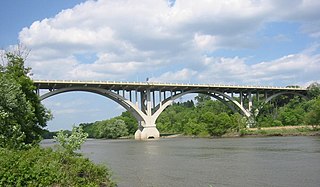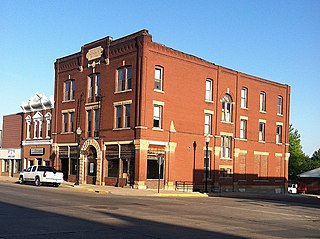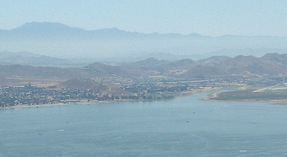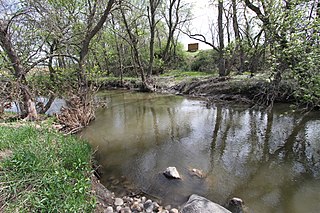| Sleepy Eye Creek | |
|---|---|
| Country | United States |
| Physical characteristics | |
| Main source | Minnesota |
Sleepy Eye Creek is a 51.8-mile-long (83.4 km) [1] tributary of the Cottonwood River of Minnesota, the United States. Via the Cottonwood River, its water flows to the Minnesota River and eventually the Mississippi River.

The Cottonwood River is a tributary of the Minnesota River, 152 miles (245 km) long, in southwestern Minnesota in the United States. Via the Minnesota River, it is part of the watershed of the Mississippi River, draining an area of 1,313 square miles (3,400 km2) in an agricultural region. The river's name is a translation of the Sioux name for the river, Waraju, for the cottonwood tree, which is common along prairie rivers. It has also been known historically as the Big Cottonwood River.

Minnesota is a state in the Upper Midwest and northern regions of the United States. Minnesota was admitted as the 32nd U.S. state on May 11, 1858, created from the eastern half of the Minnesota Territory. The state has a large number of lakes, and is known by the slogan the "Land of 10,000 Lakes". Its official motto is L'Étoile du Nord.

The Minnesota River is a tributary of the Mississippi River, approximately 332 miles (534 km) long, in the U.S. state of Minnesota. It drains a watershed of nearly 17,000 square miles (44,000 km2), 14,751 square miles (38,200 km2) in Minnesota and about 2,000 sq mi (5,200 km2) in South Dakota and Iowa.
Sleepy Eye Creek was named for Chief Sleepy Eye. [2]

Ishtakhaba, also known as Chief Sleepy Eye, was a Native American chief of the Sisseton Dakota tribe. He became chief sometime between 1822 and 1825, receiving a commission from the Bureau of Indian Affairs as chief in 1824, and remained chief until his death in 1860. His band, known as the Swan Lake or Little Rock Band, hunted "in southwestern Minnesota and southeastern Dakota ... between Swan Lake and Coteau des Prairies," until forced to move to reservation land near the Minnesota River in the wake of the 1857 Spirit Lake Massacre.


